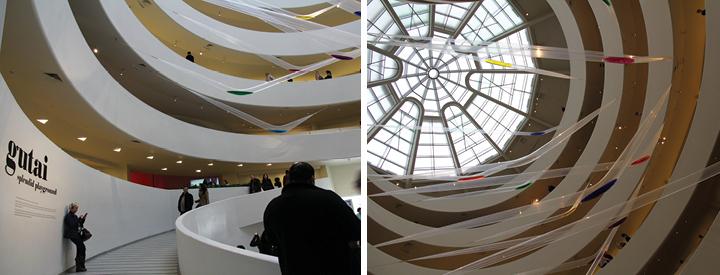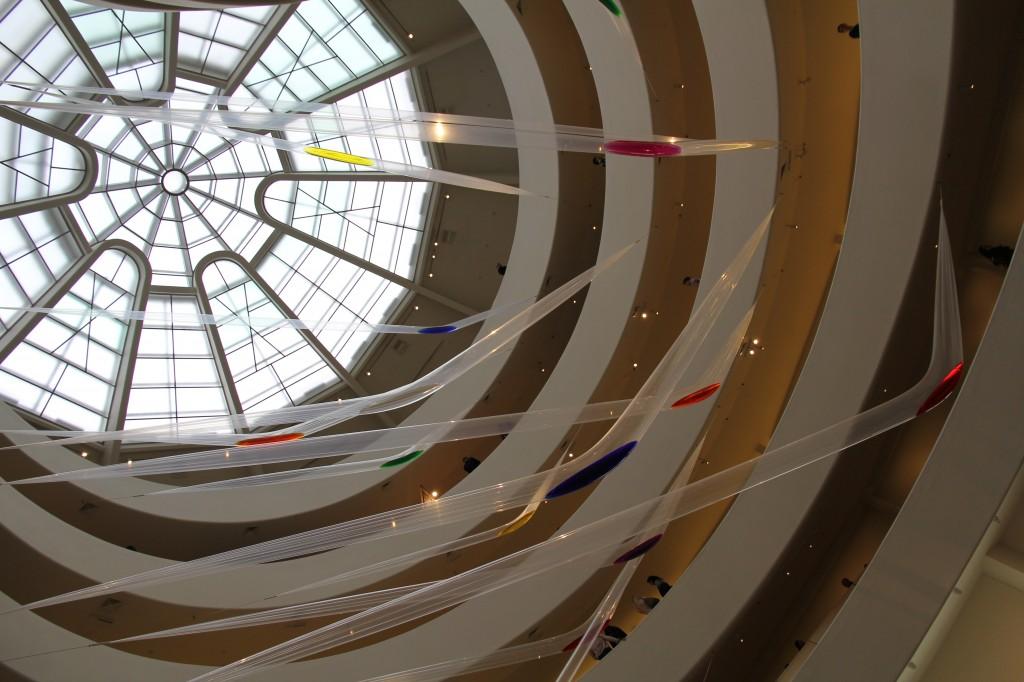Guggenheim’s Splendid Playground
March 27, 2013

If you are looking for a contemporary and dreamy exhibition, the “Gutai: Splendid Playground,” currently showing at the Guggenheim through May 8 offers the viewer a visually dazzling artistic display of Asian art.
The Gutai Art Association members cover the spectrum of Japan’s most influential avant-garde art of the post-war period. The artists worked to combine performance, painting and interactive environments in order to create an “international common ground,” as the Gutai Manifesto written by Jiro in 1954 and printed on the museum’s wall explains.
But only when entering the museum can one understand the real meaning of the exhibit’s attribution “Splendid Playground.” The rotunda, which is the internal part of the spiral structure of the museum, presents “Water” by Motonaga Sadamasa, a work consisting of polyethylene tubes filled with brightly-colored water attached to different levels of the structure. These plastic tubes look like giant brushstrokes and give a magical effect especially when caught by the sunlight.
“Water” was exhibited for the first time in the outdoor exhibitions of 1955 and 1956 of the avant-garde Japanese group, founded by artist Yoshihara Jiro in 1954. The exhibition presents a broad variation of art works, which are organized in chronological and thematic sections: “Play,” “Network,” “Concept,” “The Concrete,” “Performance Painting” and “Environment Art.” This last section explores the most innovative time frame that the artistic group covered.
Gutai’s artists described themselves as the “global pioneers of environmental art;” their works take the form of organic abstract sculptures by incorporating kinetic, light and sound art and gaining the result of machine-like organisms. Yoshida Minory’s machine-sculpture “Bisexual Flower” mimes the effect of this approach.
Other exhibitions take place hroughout the various levels of the museum, such as “Zanira: Paper Like Skin,” running through April 21, which explores Indian artist Zanira Hashmi’s works of printmaking as a commitment to minimalism and abstraction. “No Country: Contemporary Art for South and South East Asia,” another exhibit showing through May 22, explores creative art across three countries. “Dan Vo: The Hugo Boss Prize 2012,” showing through May 27, is a reconstruction of his family’s memories that illustrates the strands of private experience that shape one’s self and the long standing exhibit of Kandinsky, which closes on April 17.
IF YOU GO
“Gutai: Splendid Playground”
When:Through May 8
Where: Guggenheim Museum, 1071 5th Ave. (at 89th Street)
Price: $12 for students with ID










